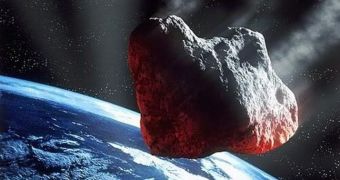Proponents of a new early asteroid detection system say that, at a cost of just $1 million per observatory, the world could learn a week in advance whether a space rock is on a collision place.
With such a preemptive measure in place, an asteroid, airburster or meteorite threatening to destroy an entire metropolis could be found, and its trajectory calculated. Authorities in the target area could then order evacuation, and thus avoid casualties.
The experts proposing the measure say that our current level of technological development would most likely not allow us to assemble a mission of any kind to destroy the threat, but argue instead that evacuation of the area where the impactor would strike is the next best thing.
University of Hawaii astronomer John Tonry gives the example of the 2009 near-miss, when a near-Earth object (NEO) passed close to our planet. In the future, we might not be so lucky as to escape impact.
Given our planet's history with major impact – which caused at least several mass extinction, and a few smaller ones – the threat is not to be taken lightly. Plus, while large comets are visible in the sky, finding cold and dark space rocks is not that easy, or obvious.
The new system would be capable of detecting airbursters such as the one that struck above Indonesia last year, packing the same force as 50,000 tons of TNT. Luckily, no one got hurt.
Another testimony of how brutal these objects can be was made in a region of Siberia called Tunguska in 1908, when an estimated 80 million trees over an area of 2,150 square kilometers (830 square miles) were destroyed.
Such bodies may enter Earth's atmosphere at a rate of one per decade, Tonry explains. Statistics from the National Research Council (NRC) shoe that a 50-meter-long impactor would cause some 30,000 deaths or more, depending on the area.
“When it comes to something that dangerous, it just feels incumbent to me that we at least look to make sure that things are okay or not, now that we have the technology to do so,” Tonry says for Space.
“Not looking would be like driving down a road without looking at your rearview mirror just because you've never been rear-ended before. It's nuts,” he adds.
The astronomer says that the cost of building a detector array capable of discovering small impactors would be significantly lower than those associated with building a telescope array for larger ones.
“The performance you can get out of modern software, modern detectors and very modest-sized telescopes is surprisingly interesting,” Tonry goes on to say.
The system he's proposing is called the Asteroid Terrestrial-impact Last Alert System (ATLAS), and it would only require two 10-inch (25-centimeter) aperture telescopes, places some 100 kilometers apart.
Such a system would be able to scan the sky twice each night, and would be built with minimal infrastructure costs. Its benefits would however surpass its costs instantly, if only one impactor were to hit.

 14 DAY TRIAL //
14 DAY TRIAL //